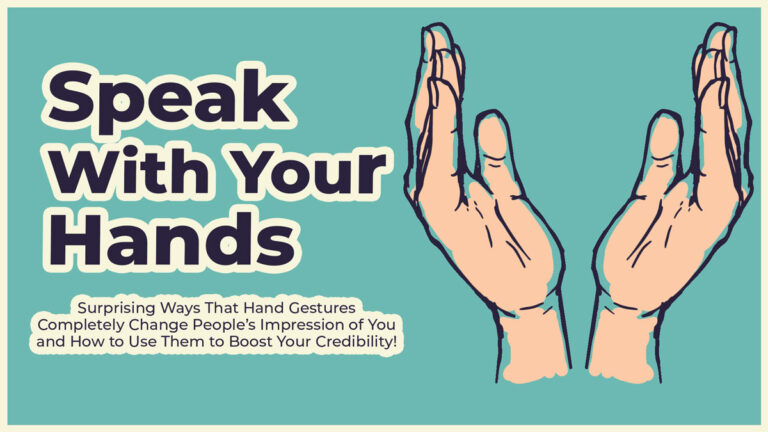Delivering a powerful presentation is an art that combines content, delivery, and most importantly, a compelling closure.
The way you end your presentation can make the difference between your audience walking away inspired to take action or forgetting your message as soon as they leave the room.
An effective close is your final opportunity to leave a lasting impression.
This ensures your audience remembers your key points and feels motivated to act on them.
In this detailed guide, we’ll focus on 7 effective ways to conclude your presentation.
We’ll explain with strategies and practical illustrations to help you craft endings that resonate and energise your audience.
1. Summarise Key Points
Begin your closing by clearly summarising the main ideas you’ve presented.
This reinforces your message and reminds the audience of the critical points they need to remember.
Be concise and dissect your presentation into bite-sized takeaways so they are clear and impactful.
This technique helps the audience retain the information better and reinforces the coherence of your message.
At the end of a presentation on healthy eating, for instance, you might say:
“To recap, integrating fruits, vegetables, whole grains, and lean proteins into your diet can significantly improve your health. Remember, it’s not about restrictions; it’s about creating new, healthy habits.”

2. Reiterate the Call to Action
Your presentation should have a clear call to action (CTA) that tells the audience exactly what you want them to do next.
Restate your CTA compellingly in your conclusion.
It should be specific, actionable, and urgent.
Make it as easy as possible for them to act, and emphasise the benefits of doing so.
For example, if your presentation is about conserving local green spaces, you could end with:
“Join our community clean-up effort this Saturday and help us protect our green spaces. Sign up at the entrance before you leave today.”

3. End with a Thought-Provoking Question
Pose a thought-provoking question to your audience for them to reflect.
This also encourages them to think deeply about the subject.
Choose a question that highlights the relevance of your topic to their lives or challenges them to consider a new perspective.
This method leaves the audience contemplating your message long after the presentation ends.
Let’s say you’re concluding a talk on digital privacy, you might ask:
“How much of your personal life are you willing to trade for convenience and where will you draw the line?”

4. Share a Surprising Statistic or Fact
Present a memorable statistic or an unexpected fact that reinforces your message and the importance of your call to action.
Choose data that is relevant, shocking, or particularly persuasive.
Make sure it aligns with the core message of your presentation.
As an illustration, If your presentation is about climate change, conclude with,
“Every year, we lose forested areas the size of the UK to deforestation. The time to act is
now, not tomorrow – our planet cannot wait.”

5. Tell an Inspirational Story
End with a short, relevant story that encapsulates your message and inspires your audience.
The story should be directly related to your main points and should evoke emotion.
This will encourage the audience to feel connected to your message and motivated to act.
For instance, in a presentation on perseverance, you might conclude with a brief story about a well-known person in an industry.
Highlight how they overcame significant obstacles to achieve their dreams.
Remember to emphasise that the audience can do the same.

6. Offer a Vision of Success
Paint a vivid picture of what the future could look like if the audience takes the action you recommend.
Describe this positive outcome in detail, making it as real and tangible as possible.
In this way, they can visualise the benefits of taking immediate action.
For example, when concluding a presentation on innovation in the workplace, you might say,
“Imagine a workplace where your ideas are not only heard but acted upon, creating a culture where innovation thrives and everyone benefits.”

7. Make a Personal Commitment
Demonstrate your own commitment to the cause or action you are promoting.
This shows the audience your genuine belief in the message and can motivate them to commit as well.
Share what you will do or have done, making your concluding remarks personal and relatable.
Let’s say your presentation is about reducing plastic use, you might end the presentation with,
“I’ve committed to eliminating single-use plastics from my daily life, and I challenge you to do the same. Together, we can make a substantial difference.”

An Engaging Presentation with a Powerful Closing Both Informs and Transforms
With these strategies in your presenter’s toolkit, you’re ready to close your sessions.
The end of your presentation is your final chance to make an impact, so it’s crucial to leave your audience with a strong, actionable message.
By doing these 7 techniques, you can craft a conclusion that not only resonates with your listeners but also empowers them to take the action you’ve guided them towards.
Remember, a successful presentation doesn’t just inform; it transforms.
Use your closing moments wisely to inspire change, provoke thought, and ignite a spark in your audience that leads to action.


